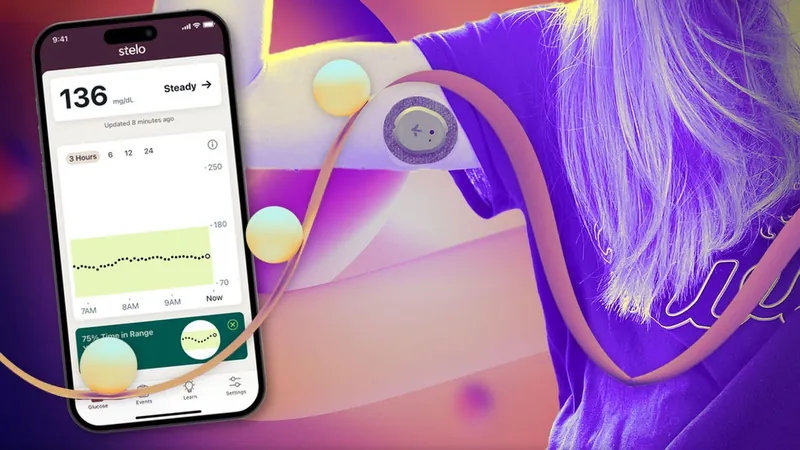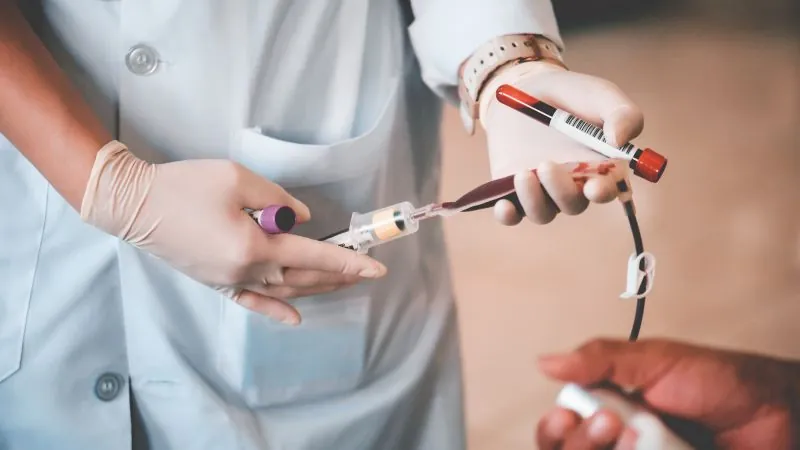
The Ups and Downs of Tracking My Blood Sugar: A Month of Surprising Revelations
2024-09-25
In an era where health consciousness is at its peak, many individuals strive to maintain a healthy lifestyle. I, too, have been part of this journey, following a predominantly vegetarian diet, staying active, and soaking in the sunshine whenever possible. I’ve kept up with my annual blood tests, monitoring everything from cholesterol to blood glucose levels, understanding the alarming prevalence of chronic diseases like Type 2 diabetes in the U.S. Thankfully, I felt secure in my health status—until I decided to try something new.
Diving into Continuous Glucose Monitoring
I was determined to understand my blood sugar levels better by using the Stelo continuous glucose monitor (CGM), a noteworthy advancement that has recently become available in the U.S. without a prescription. Until now, such devices were primarily confined to insulin-dependent diabetics and select biohackers who could navigate the medical system to procure one. Intrigued by the potential to track the last missing piece of health data often overlooked by traditional wearables like smartwatches, I placed the quarter-sized biosensor on my upper arm, confident that my lifestyle would yield reassuring results.
However, I was in for a wake-up call. Expectations of simple blood sugar trends quickly gave way to complex challenges. My initial assumption that my glucose levels would remain stable unraveled as I noticed dramatic fluctuations throughout the month. Unexpected spikes forced me to reevaluate my daily habits, including stress management, exercise regularity, and sleep quality—areas I had previously brushed off as minor.
Understanding Continuous Glucose Monitoring
For those unfamiliar, The Stelo, crafted by Dexcom, is designed for adults without insulin dependence who want insight into their glucose levels. It operates not through blood but by measuring interstitial fluid through a small needle, making it a user-friendly option for those seeking better health management.
After downloading the Stelo app and inputting my target glucose range, the setup process was straightforward. I attached the biosensor to my arm with relative ease and almost no discomfort. At $99 for a month’s supply of sensors, Stelo provides a more affordable solution compared to many alternatives that necessitate prescriptions. This accessibility hopefully signifies a future with more widespread health monitoring.
A Journey of Discovery: Daily Tracking and Surprises
Starting my Stelo journey on a busy workday, I soon encountered my first unexpected spike after eating what I considered a healthy vegan bowl. The app's logging feature guided me to document my meals, enabling me to connect food choices to blood sugar responses. However, the task of calorie-counting felt overwhelming, and I eventually simplified my documenting approach.
One notable experience was the surprise spike following a seemingly nutritious salad. This event led to a stressful reevaluation of my habits, questioning whether my rapid glucose rise resulted from my meal, my work pressure, or a combination of factors. Adding to the confusion, consuming wine and popcorn later did not raise my blood sugar as expected. It became increasingly apparent that nutrient-rich foods didn’t always correlate with stable glucose levels, raising new concerns about my understanding of nutrition.
Reflecting on Dietary Choices and Lifestyle
As the days progressed, consistent patterns emerged. After fulfilling a hefty training session with a carb-rich bagel breakfast, I experienced my highest spike yet, overshadowing my previous concerns about prediabetes.
Surprisingly, weeks into my tracking, my glucose levels began to stabilize. I focused on increasing protein intake, reducing sedentary periods after meals, and prioritizing sleep—all seemingly simple changes leading to more balanced readings. My morning glucose levels improved, hinting that a holistic view of health can yield significant benefits.
Insights from medical professionals suggested that brief glucose spikes, while startling, might not always be indicative of severe issues. Experts noted a potential need for research around glucose metrics in healthy individuals, emphasizing that not every fluctuation signals impending doom.
The Broader Implications of Continuous Monitoring
While continuous monitoring presents opportunities for insights into personal health, I adapted my perspective and habits without succumbing to undue stress surrounding numbers that fluctuated. I learned that understanding how lifestyle factors influence blood sugar can provide valuable insights into diabetic management and overall wellness, potentially reversing reliance on medication for people with Type 2 diabetes.
Ultimately, the benefits of the Stelo experience transcended mere numbers. This month reaffirmed the importance of maintaining a balanced lifestyle and recognizing areas for improvement, particularly regarding stress and sleep. Breaking old patterns can feel overwhelming but leads to an enlightening journey toward better health.
In summary, embarking on a month-long blood sugar tracking endeavor was both enlightening and transformative, confirming that personal wellness is an evolving journey. Every small change counts, fueling not just better glucose levels, but a deeper sense of empowerment over my health choices.




 Brasil (PT)
Brasil (PT)
 Canada (EN)
Canada (EN)
 Chile (ES)
Chile (ES)
 España (ES)
España (ES)
 France (FR)
France (FR)
 Hong Kong (EN)
Hong Kong (EN)
 Italia (IT)
Italia (IT)
 日本 (JA)
日本 (JA)
 Magyarország (HU)
Magyarország (HU)
 Norge (NO)
Norge (NO)
 Polska (PL)
Polska (PL)
 Schweiz (DE)
Schweiz (DE)
 Singapore (EN)
Singapore (EN)
 Sverige (SV)
Sverige (SV)
 Suomi (FI)
Suomi (FI)
 Türkiye (TR)
Türkiye (TR)